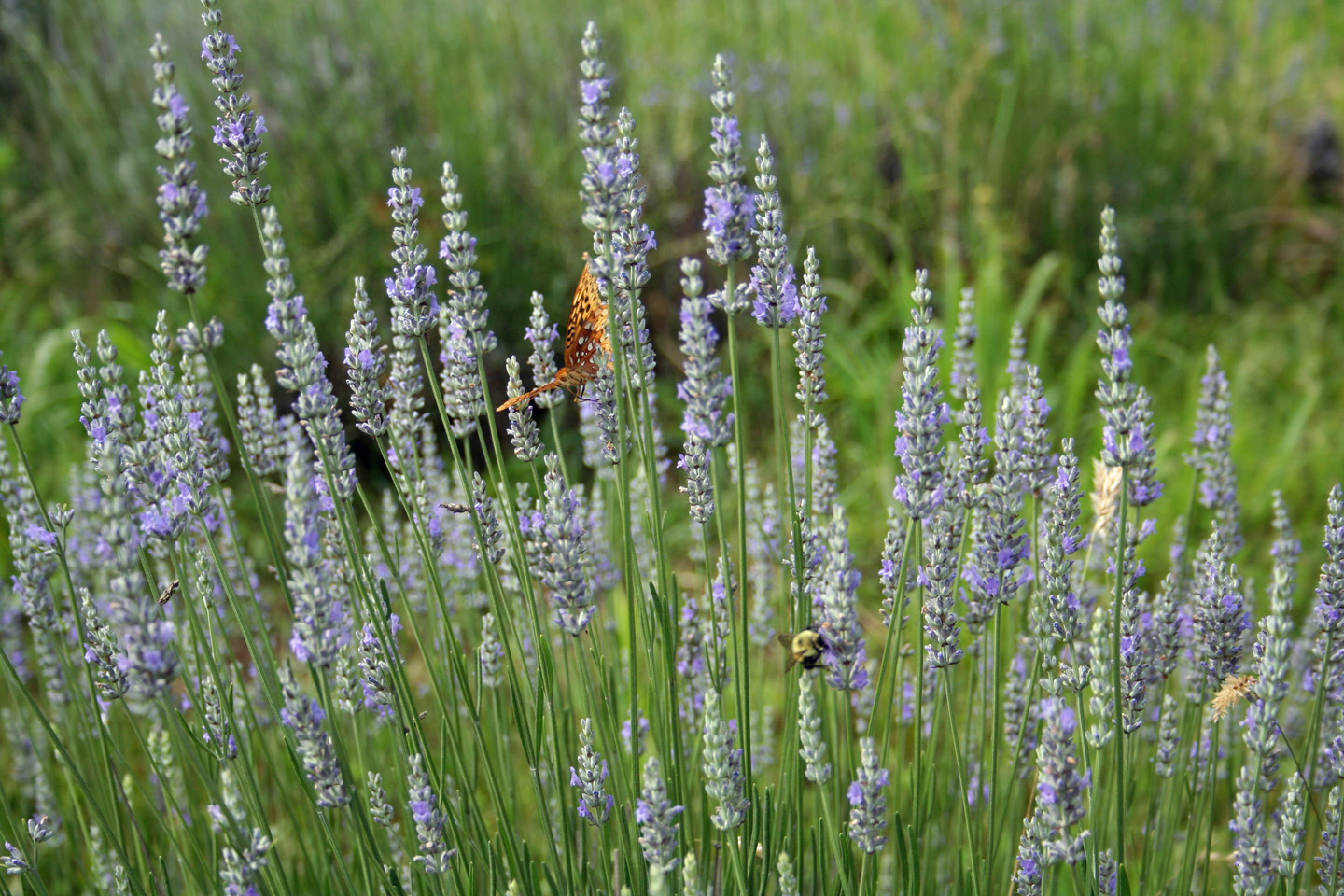Lavender, one of the best known fragrant herbs, has been loved and used for centuries. Its name comes from the Latin lavare, to wash, indicating its use for baths and for clothing. In ancient
Rome it was used to scent the water in public baths, and the Roman
legions carried it as a disinfectant. Linens were washed and stored
with lavender for fragrance and to deter insects in medieval times, a
custom carried over up to the present.
Lavender has long been considered a powerful healing herb. It was reputed to cure a multitude of ailments by well known healers and herbalists such as Hildegarde of Bingen (1098-1180). In the Middle Ages, it was an ingredient of "Four Thieves vinegar”, a popular remedy for the plague. The health benefits of lavender remain well known today. Lavender essential oil is widely used in aromatherapy to induce relaxation and a sense of well-being. As a dilute topical application, the essential oil promotes relief and healing of sunburn.
GROWING AND CULTIVATING LAVENDER
Even if lavender were not so useful, however, its beauty in the garden is reason enough for its popularity. Of the many cultivars of lavender, the most familiar belong to 4 species - lavandula angustifolia (hardy English type lavenders), lavandula x intermedia (the type grown commercially for perfume, especially in France), lavandula lanata x angustifolia (known for silvery foliage), and lavandula stoechas (tender Spanish types).
Lavenders come in a wide variety of sizes, colors, and growth habits. They flourish in full sun and open spaces with good air circulation. All are quite tolerant of drought and are resistant to deer, rabbits and other small animals. Most species are winter hardy to USDA Zone 4, with the exception of lavandula stoechas cultivars. These more tender lavender varieties can be grown successfully indoors in pots all year round, as long as they receive adequate light.
Although lavender is easy to care for, excessive soil moisture is one of the few things that can prove fatal to this beloved herb. Root rotting disease, a common problem in wet garden areas, can be prevented by lightening heavy soils with sand and compost, creating drainage channels or planting in raised beds.
Lavender spikes should be harvested early in the day, when the first few flower buds have opened, for best color and scent. Pruning lavenders, whether in pots or in the ground, is best done right after flowering, up to one half the length of the stem.
